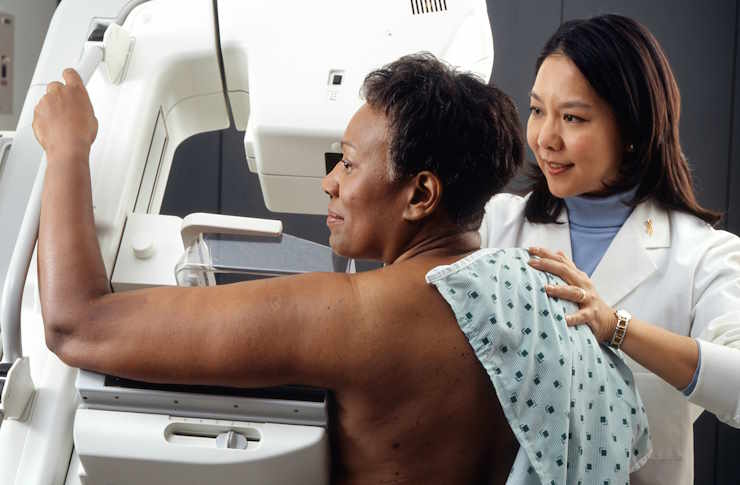Triple Negative Breast Cancer: Key Symptoms and Early Signs
Triple Negative Breast Cancer (TNBC) is an aggressive form of breast cancer that does not respond to common hormone therapies. This article explains the main symptoms and early signs, reviews treatment considerations, and highlights the importance of awareness for women’s health.

Common Signs and Physical Symptoms of TNBC
The physical manifestations of triple negative breast cancer often mirror those of other breast cancer types, making clinical recognition challenging without proper testing. The most frequently reported symptom is a new lump or mass in the breast tissue, which may feel firm, irregular, or fixed to surrounding tissue. Unlike benign lumps that often feel smooth and movable, TNBC tumors typically present as hard, immovable masses that may cause dimpling or puckering of the overlying skin.
Additional physical symptoms include changes in breast size or shape, nipple discharge that may be bloody or clear, and skin changes such as redness, scaling, or thickening. Some patients experience breast pain or tenderness, although this is less common with TNBC compared to other breast conditions. Swelling in the lymph nodes under the arm, near the collarbone, or in the chest area can also indicate the presence of cancer cells.
Early Indicators That May Signal TNBC
Recognizing early warning signs can significantly impact treatment outcomes for triple negative breast cancer. Beyond the obvious physical changes, subtle indicators may include unexplained breast swelling without a distinct lump, persistent skin irritation or rash, and changes in nipple appearance such as inversion or unusual positioning. Some individuals notice an orange-peel texture to the breast skin, medically known as peau d’orange, which can signal inflammatory changes.
Early-stage TNBC may also present with symptoms that seem unrelated to breast health, such as unexplained fatigue, unintentional weight loss, or persistent bone pain. These systemic symptoms become more relevant when combined with localized breast changes and should prompt immediate medical evaluation.
Understanding Risk Factors and Prevention
Several factors increase the likelihood of developing triple negative breast cancer, with age being a significant consideration. TNBC disproportionately affects younger women, particularly those under 40, and is more prevalent among African American and Hispanic women. Genetic predisposition plays a crucial role, with BRCA1 mutations strongly associated with TNBC development.
Family history of breast or ovarian cancer, particularly in first-degree relatives, elevates risk substantially. Lifestyle factors such as obesity, lack of physical activity, and excessive alcohol consumption may contribute to increased risk. While prevention strategies cannot guarantee protection against TNBC, maintaining a healthy weight, engaging in regular physical activity, limiting alcohol intake, and breastfeeding when possible may help reduce overall breast cancer risk.
Diagnostic Procedures and Testing
Accurate diagnosis of triple negative breast cancer requires a comprehensive approach involving multiple testing methods. Initial evaluation typically begins with clinical breast examination and imaging studies such as mammography or breast ultrasound. However, definitive diagnosis requires tissue sampling through core needle biopsy or surgical biopsy.
The distinguishing feature of TNBC diagnosis involves immunohistochemistry testing to confirm the absence of estrogen receptors, progesterone receptors, and HER2 protein expression. Additional molecular testing may include assessment for BRCA mutations and other genetic markers that can inform treatment decisions. Advanced imaging techniques such as MRI or PET scans help determine the extent of disease and guide staging decisions.
Treatment Options and Approaches
Treatment strategies for triple negative breast cancer primarily rely on chemotherapy, surgery, and radiation therapy, as targeted hormone therapies are ineffective due to the absence of hormone receptors. Neoadjuvant chemotherapy, administered before surgery, often serves as the initial treatment approach to shrink tumors and assess treatment response.
Surgical options include lumpectomy with lymph node evaluation or mastectomy, depending on tumor size, location, and patient preferences. Radiation therapy typically follows breast-conserving surgery and may be recommended after mastectomy in certain circumstances. Recent advances have introduced immunotherapy options, particularly for patients with PD-L1 positive tumors, offering new hope for improved outcomes.
Treatment decisions require careful consideration of individual patient factors, tumor characteristics, and potential side effects. Participation in clinical trials may provide access to innovative therapies and contribute to advancing TNBC treatment options for future patients.
Triple negative breast cancer presents unique challenges due to its aggressive nature and limited targeted treatment options. Early recognition of symptoms, prompt medical evaluation, and comprehensive diagnostic testing are essential for optimal outcomes. While TNBC tends to be more aggressive than other breast cancer types, advances in treatment approaches continue to improve survival rates and quality of life for patients facing this diagnosis.
This article is for informational purposes only and should not be considered medical advice. Please consult a qualified healthcare professional for personalized guidance and treatment.




